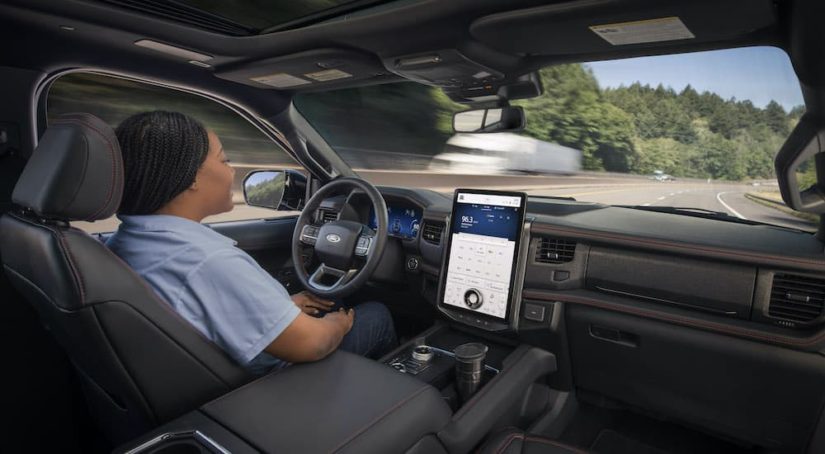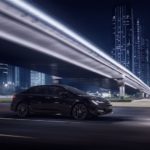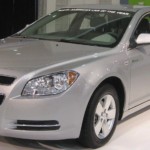If you have been shopping for a new car, you are likely well aware that every manufacturer is loading its latest models with all kinds of active safety features and driver-assist systems. However, you may be left wondering exactly what all these systems are and how they work. While modern safety technology may seem like magic from the glowing advertising copy and manufacturer videos showing cars all but driving themselves, the truth is a bit more complicated. Driver-assist systems do improve safety on the road and are a valuable addition in any car, but they have more limitations than are commonly advertised, and understanding how they work can be critical when buying a car.
Unfortunately, understanding driver-assist features aren’t made any easier by the manufacturers since they all seem to have their own special names for similar technologies, and similar-sounding technologies often perform quite differently on the road. For instance: what is the difference between Kia’s Lane Following Assist and Lane Keeping Assist? Or Toyota’s Dynamic Radar Cruise Control and Full-Speed Range Dynamic Radar Cruise Control? If you have been staring at lists of driver-assist systems hoping someone could explain what they actually mean and how they work, then CarBuyerLabs is here to help.
It’s the Wild West Out There
The first thing you need to know about driver-assist technology is that it is an incredibly unregulated aspect of car design. In an era when the government even mandates how many inches the hood can be from the top of the engine block, it may be surprising to learn that there are effectively no official standards governing driver-assist features. The government branch responsible for vehicle safety (the NHTSA) doesn’t even attempt to measure the effectiveness of driver-assist systems, merely noting on its website if the manufacturer claims to offer them. The independent IIHS does make an attempt, but its testing regime is so lax that a car can receive a passing rating even if the automatic braking systems fail to prevent it from hitting obstacles in its path.
Unfortunately, this means that even an informed consumer is mostly left trusting the manufacturer’s word that the available driver-assist systems actually perform as described––doubly tricky when the descriptions of how they work are often vague and deliberately left open to interpretation. In short, no matter how well equipped your vehicle is on paper, it is still entirely on the driver to avoid accidents on the road. While your driver-assist technology may save you in an emergency, it is not something that you want to count on to do your job for you.
Forward Collision Warning / Automatic Emergency Braking
When you think about advanced driver-assist safety features, crash prevention is probably on top of your list. Rear-end collisions are far too common, and nearly all of them are entirely preventable if drivers simply paid attention to the road in front of them and maintained a safe following distance. These safety systems are designed to alert you when you are rapidly approaching an obstacle ahead of you, with most (but not all) systems providing some level of automatic braking to mitigate or prevent the impending collision.
The vast majority of these systems rely on a forward-facing camera to detect potential collisions, which means that they are much less reliable in darkness or bad weather. Most systems are also only capable of detecting car-sized objects directly in front of them, which means they won’t work for pedestrians, bicyclists, motorcycles, or smaller obstructions, and they don’t work properly in sharp corners (more modern systems can detect pedestrians and even see through some corners, but these are still more challenging scenarios).
The final limitation is that many of these collision-prevention driver-assist systems only work at certain speeds. For instance, Honda’s Collision Mitigation Braking System only works at up to around 62 mph – and that’s one of the better systems. GM’s version stops working at 50 mph, which is a more common number among the manufacturers that even bother to state their system’s limits. This means that your collision avoidance feature will likely not kick in unless you are already slowing down, so pay attention when you’re behind the wheel.
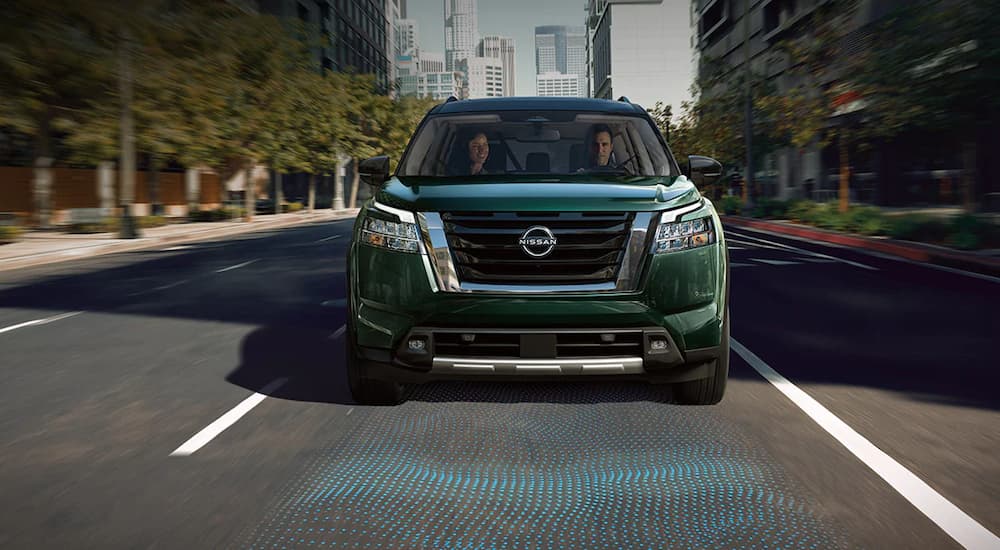
Common Industry Names
- FCA: Advanced Brake Assist
- Ford: Pre-Collision Assist with Automatic Emergency Braking
- GM: Automatic Emergency Braking
- Honda: Collision Mitigation Braking System
- Hyundai: Forward Collision-Avoidance Assist
- Mazda: Advanced Smart City Brake Support
- Nissan: Intelligent Forward Collision Warning
- Toyota: Pre-Collision System
Lane Departure Warning / Lane Keeping Assistance
While you might not think about it, a large number of accidents are the result of a driver simply failing to keep their car between the lines. Whether through inattention or impairment, many cars end up off the road in a ditch – if not wrapped around a tree or in a head-on collision. That is why lane-keeping systems are among the most common forms of driver-assistance technology that you will encounter. Many older systems will simply beep at you if your car wanders too close to the lane markings, but the majority of modern systems will also provide automatic steering inputs to keep you in your lane. The very best systems bill themselves as lane-centering systems and will attempt to keep you centered in your lane when active.
Lane keeping systems are virtually always camera-based, so if the camera can’t see the lines, the system doesn’t work. They also generally aren’t very smart, so if the road has confusing patterns on it, the system may mistakenly think that you are in the wrong lane and attempt to “correct” you. Fortunately, manufacturers often include sensitivity settings for these systems so you can adjust the level of input to what works for you. Lane keeping systems also have the unintentional side effect of making people better about using their turn signals since that is how you let the car know that you are switching lanes intentionally.
Lane centering systems are still somewhat rare and are generally tied to the car’s cruise control system. When active, they promise to keep you centered in your lane so that you don’t need to provide constant steering inputs as you drive, but you still usually have to keep your hands on the wheel. GM’s Super Cruise and Ford’s BlueCruise go a step further, allowing you to remove your hands from the wheel entirely but otherwise function similarly. However, many lane centering systems don’t quite live up to their promise and provide somewhat erratic lane following, so be sure to test this when you take a car for a test drive.
Common Industry Names
- FCA: LaneSense Lane Departure Warning with Lane Keep Assist
- Ford: Lane-Keeping System
- GM: Lane Keep Assist with Lane Departure Warning
- Honda: Lane Keeping Assist System / Road Departure Mitigation System
- Hyundai: Lane Departure Warning / Lane Keeping Assist
- Mazda: Lane Departure Warning with Lane Keep Assist
- Nissan: Lane Departure Warning / Intelligent Lane Intervention
- Toyota: Lane Departure Alert with Steering Assist
Blind Spot Warning / Rear Cross Traffic Warning
A large number of car accidents occur because the driver quite simply didn’t know there was another car in their way. While the previous driver-assist systems that we have looked at are intended to cover for any small mistakes the driver makes, blind spot warning and rear cross traffic warning are designed to provide the driver with information that they might not have had otherwise. While these two technologies perform rather different functions, they are almost always grouped together because they rely on the same sensors––a pair of small radars in the rear bumper.
When used for blind spot warnings, these radars will detect vehicles hiding in your side blind spots, generally illuminating a small warning light in your side mirror. If you go to change lanes, the system will usually sound an alarm, with some versions even automatically steering you safely back into your lane. When used for rear cross traffic warning, the radars will look to your sides for approaching traffic as you attempt to back out of a parking space or driveway, sounding an alarm if it is not safe to continue.
Because these systems use radar rather than cameras, they will function normally in darkness and bad weather. However, they have their own limitations. Rear cross traffic warning only triggers for moving vehicles and will not detect pedestrians or cyclists, so you still have to manually look behind you when you reverse. It also doesn’t necessarily see all approaching vehicles. Toyota’s version, for instance, cannot detect traffic moving at less than 5 mph or more than 18 mph.
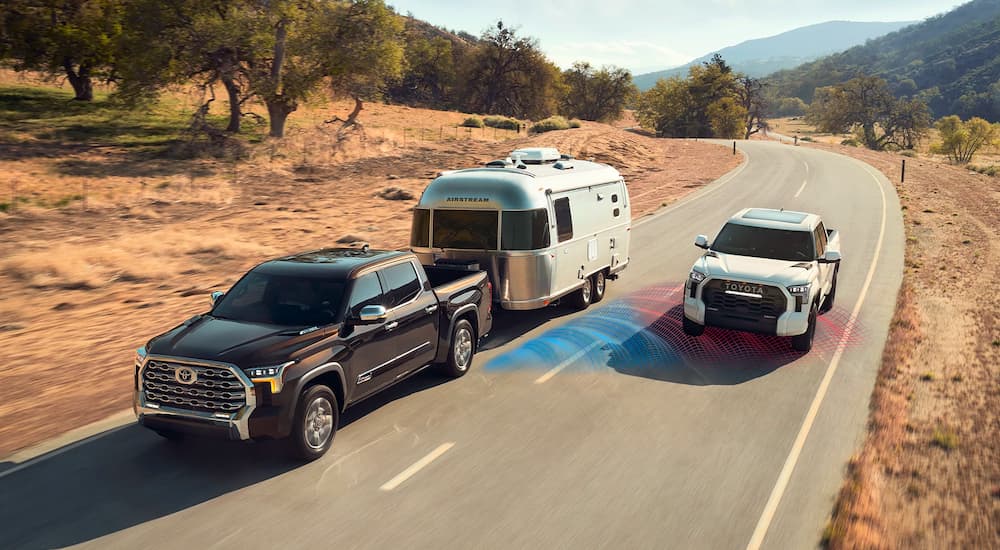
Common Industry Names
- FCA: Blind Spot Detection / Rear Cross Path Detection
- Ford: Blind Spot Information System with Cross-Traffic Alert
- GM: Side Blind Zone Alert / Rear Cross Traffic Alert
- Honda: Blind Spot Information System with Cross Traffic Monitor
- Hyundai: Blind-Spot Collision-Avoidance Assist / Rear Cross-Traffic Alert
- Mazda: Blind Spot Monitoring / Rear Cross Traffic Alert
- Nissan: Blind Spot Warning / Rear Cross Traffic Alert
- Toyota: Blind Spot Monitor With Rear Cross-Traffic Alert
Driver-Assist Systems are Getting Better, But They Still Aren’t Perfect
Most vehicles for sale today now include automatic emergency braking and lane keeping assistance systems standard, and blind spot warning is becoming more prevalent as well. Technology also continues to evolve, with new types of driver-assist systems becoming selling points for brands. Whether it is with a dozen different exterior camera angles to help you better see your surroundings, automatic adaptive headlights that turn on in low light and swivel to see through corners, or even hands-free driving systems that let the car nearly drive itself, manufacturers are doing their best to make driving safer and more convenient than ever before.
However, it needs to be remembered that these systems are all still relatively new, and just because a manufacturer advertises a driver-assist technology, it doesn’t mean that said technology will perform as expected in the rear world. While you certainly shouldn’t just avoid driver-assist features when searching for a new car, once you are behind the wheel, you should always remember that the ultimate responsibility for staying safe is entirely on your shoulders, and no amount of technology can replace an alert driver.
